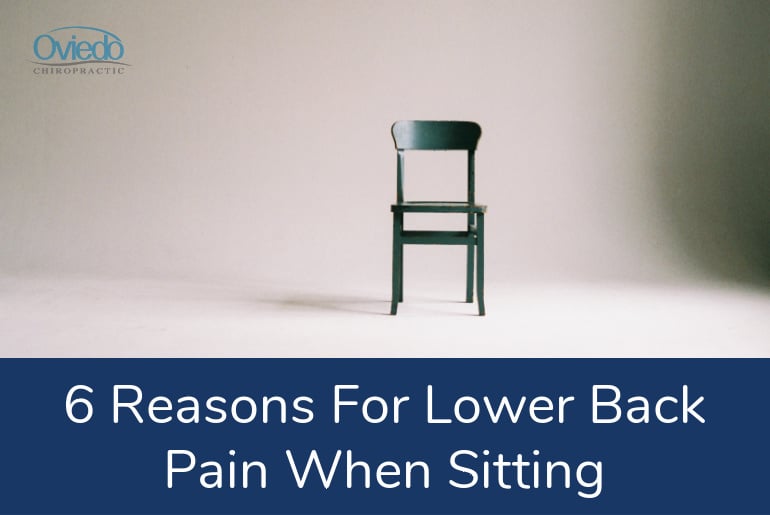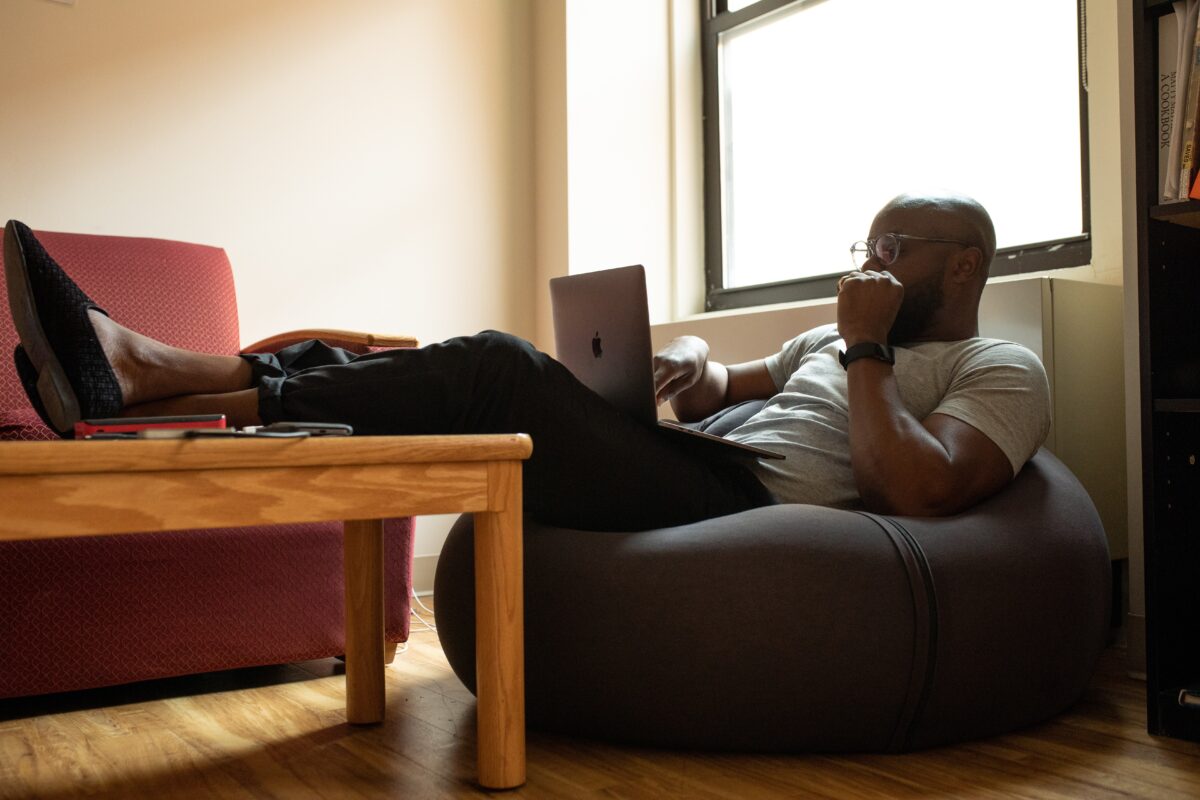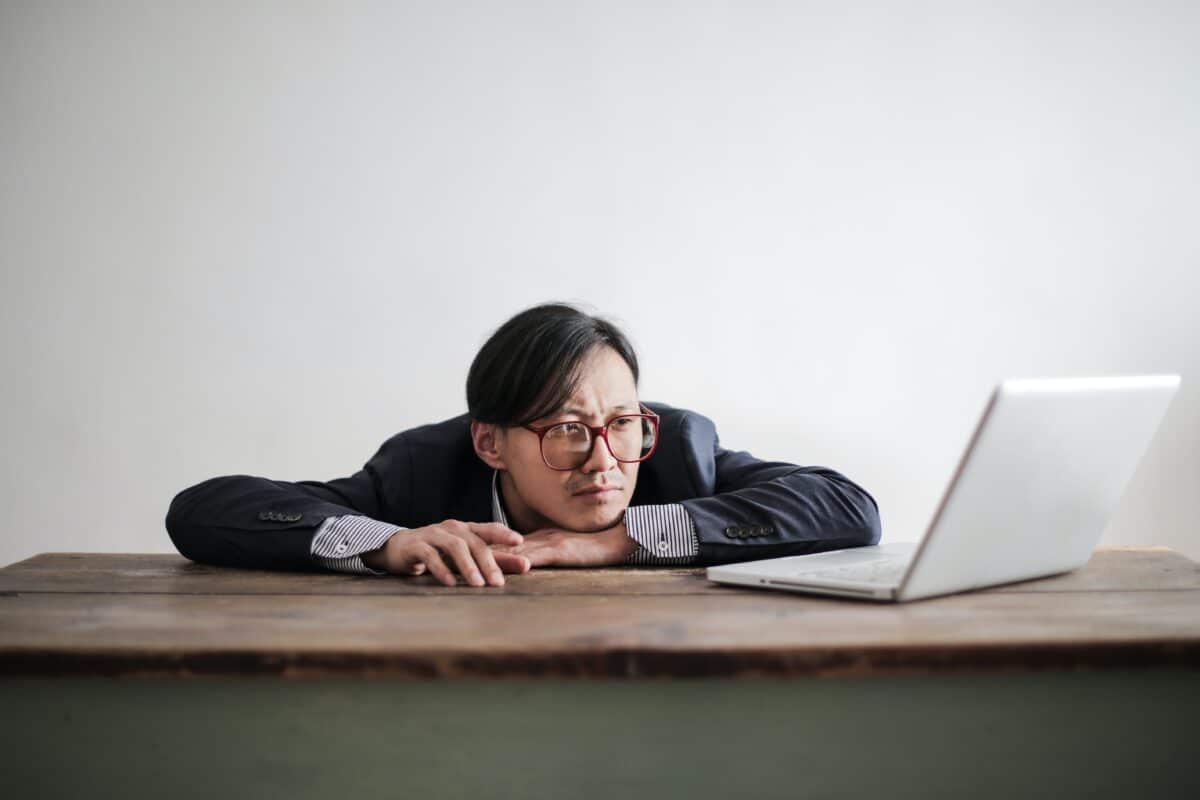6 Reasons for Lower Back Pain When Sitting

You sit at a desk all day…so why does your back hurt so much?
Lower back pain when sitting is common, but that doesn’t mean it’s unavoidable.
Two hundred years ago, working at a desk job was a privilege afforded to only the top 1% of society. Nowadays, technological advancements (not to mention a global pandemic) mean that the majority of the country works, plays, and spends the bulk of their lives in a seated position.
But that doesn’t mean it’s healthy. Sitting is extremely hard on your back.
If you’re among the millions of people who experience lower back pain when sitting, you might be confused. After all, how can you back hurt when you’ve been relaxing all day?
While it’s true that acute pain and injuries require plenty of rest so your body can recover, not all pain is best treated by putting your feet up. In fact, prolonged sitting can lead to lower back pain in multiple ways.
We Offer Same-Day Appointments
1. Bad Posture
One of the main reasons for lower back pain when sitting is probably the most obvious: bad posture.
When you hunch over a keyboard or slouch on the sofa, your muscles and ligaments are unnaturally stretched and contorted. And even if you start the day with excellent posture, it probably gets worse the longer you sit.
After eight hours (or more), it’s no wonder your back hurts!

2. Spinal Disc Compression
Between each of your vertebrae is a disc made of spongy material. These discs act as shock absorbers and protect your bones from rubbing against each other.
As you might imagine, the more cushion there is between your vertebrae, the less pain you feel. Unfortunately, prolonged sitting causes your discs to compress. When this happens, the discs can bulge outward, putting pressure on your spinal cord.
Discs can also become compressed if you are in the later stages of degenerative disc disease.
If you’re feeling pain in your lower back that seems to spread to other areas of your body, too much sitting could be to blame.
3. Shorter Hip Flexors
Prolonged sitting shortens your hip flexors, a group of muscles that run between the top of the thighs and the lower back. When these muscles are too tight, they can lead to anterior pelvic tilt, or a forward rotation of the pelvic bones. Anterior pelvic tilt forces your lower back into an unnatural position, even when standing up.
While you can find plenty of exercises to combat this issue, this does not address the source of your back problems: namely, your sitting.

4. Back Strain
When you’re walking or standing, your legs and core muscles can help bear the weight of your upper body. But when you’re seated, your spine has to handle its own weight. (And chances are, you don’t activate your core muscles when sitting.)
Instead, your lower back is holding up the entire upper half of your body without any assistance. It’s no wonder you’re exhausted!
5. Restricted Blood Flow
If you haven’t put a concerted effort into creating an ergonomic workspace, there’s a good chance that your position is restricting your blood flow. If your knees are higher than your hips when you sit, the end of your chair can press against the blood vessels in your legs.
Reduced blood flow can easily lead to lower back pain, but varicose veins and deep vein thrombosis (DVT) are also common.

6. Lack of Movement
Whether sitting or standing, your body isn’t designed to hold any position for long periods of time; it works best when it’s moving.
When you’re sitting in one position for eight or more hours a day, your joints can become accustomed to that position and it may become painful when you finally start to move. Unfortunately, this can lead some people to restrict their movements or skip exercise due to their “bad knees.”
In fact, the problem may be that they’re not moving enough.
What You Can Do
Although your job might be the reason for pain, this doesn’t mean you have to find a new career. There are steps you can take to reduce the effects of lower back pain when sitting.
Go Ergonomic
If you have to spend most of the day in front of a computer, commit to creating an ergonomic desk setup that puts your body into the best position possible. Adding lumbar support can help take some of the burden off your lower back and keep it in the proper alignment.
For the best benefit, switch to a standing desk with a treadmill. You’ll not only help your back, you’ll burn some calories while you’re at it.
But ergonomics aren’t just for your desk. Treat your body well by practicing good posture while sitting at a restaurant, on the couch, or even standing and walking.

Get Moving
Scientific research has uncovered a link between prolonged sitting and death, but these risks are much lower for people who exercise regularly.
Consistent exercise is necessary to undo the negative effects of all that sitting and help get your blood moving and your joints and muscles loosened up.
Low-impact exercises such as yoga, pilates, or walking will give you all the benefits you need without aggravating your joints. At the very least, get up from your desk every 30 minutes or so and take a brisk walk around the office.
Visit the Chiropractor
Chiropractors don’t just crack your back, they specialize in proper alignment of the bones and muscles to allow your body to work as it’s designed to work.
The underlying belief is that if you allow the body to “get out of its own way,” it will move more efficiently and with much less pain. Chiropractic adjustments, flexion-distraction, E-stim, and massage therapy are all useful tools in your fight against pain.
Conclusion
Lower back pain when sitting might be common, but that doesn’t mean it’s normal.
If you’re experiencing chronic back pain, spending the majority of your day sitting down could be to blame. Make some ergonomic changes, exercise regularly, and see a chiropractor to correct the misalignments in your vertebrae.
At Oviedo Chiropractic, our doctors aim to not only treat but educate our clients on the treatment methods they’re using. You will be surprised at how much better you feel!
Call today or visit our website to schedule your appointment.

